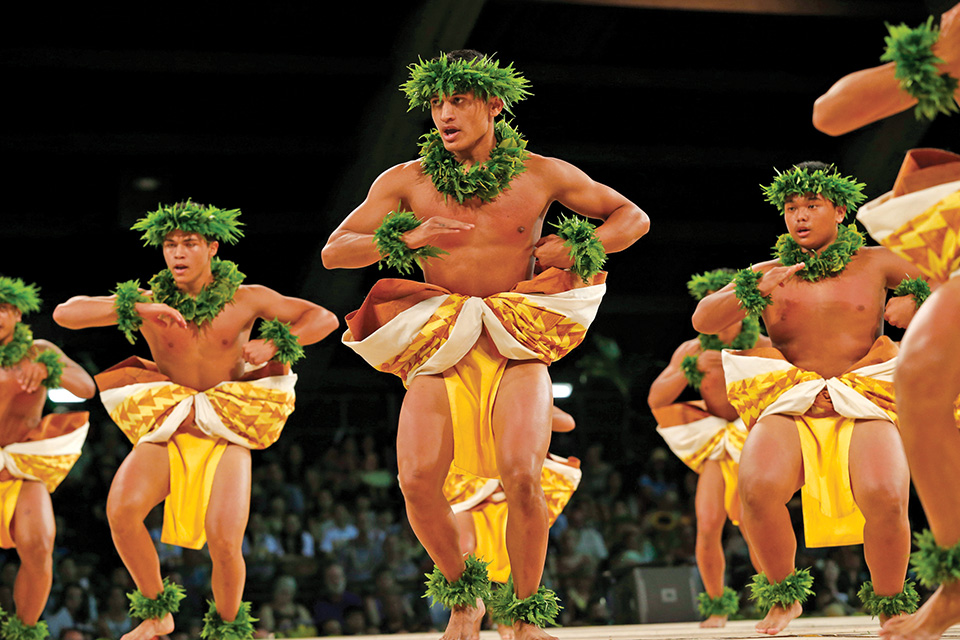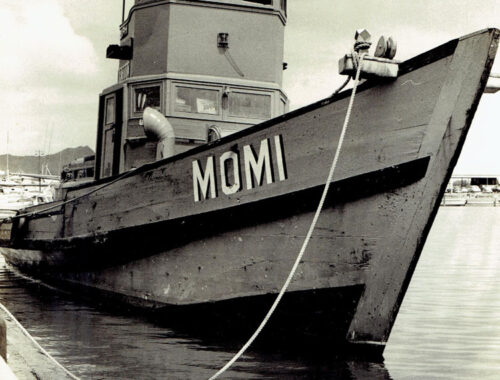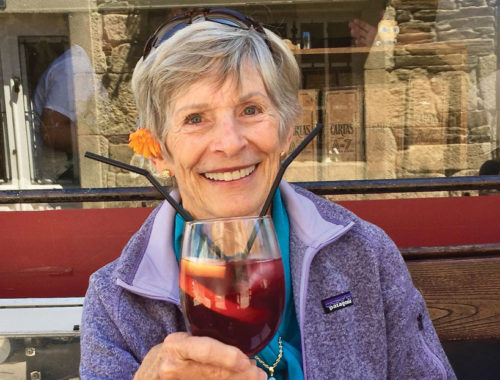
Meet Hawai‘i’s Dr. Doolittle, Paul Breese
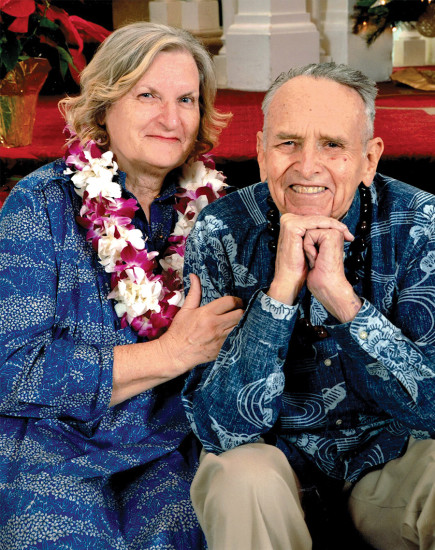
By Ma‘ata Tukuafu
When Paul Breese and Jean DeMercer-Breese began co-authoring their book about the history of the Honolulu Zoo, they had no idea it would take ten years to complete. Paul Breese served as director of the zoo from 1947 until his retirement in 1965, and is highly respected in his field. His wife Jean, a recently retired teacher from Kohala Elementary School, assisted with the research and writing of the manuscript.
The result of their effort, The Honolulu Zoo, Waikiki’s Wildlife Treasure 1915–2015, presents us with a unique look into the archives of Hawai‘i’s zoo history using newspaper clippings, stories from multiple sources and hundreds of photos. Jean said that while writing the book, she and Paul developed a sense of understanding and appreciation for each other’s skills and perceptions, and that “it was a journey in partnership and triumph in its publication.”
“How very quickly family stories can be lost,” says Paul. “My real thought on writing this book was how most folks had really vague knowledge of what their parents had done, and if someone cared enough to write them down…otherwise it wouldn’t happen.” Both Jean and Paul agree on how important it is to honor the stories of people who have quietly excelled in an otherwise lost history.
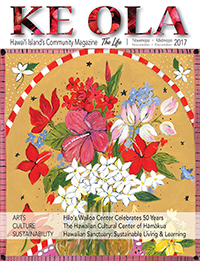
Born in 1922 in Minneapolis, Paul has always had an affinity for animals. One of his most cherished memories is when he was eight years old and explained to his mother and aunt how his pet alligator used its webbed feet along with its tail to swim in his bathtub. He explains how this memory has become prophetic over his lifetime, because the two basic commitments in his life have encompassed maintaining and interpreting exotic creatures.
Over the course of his childhood, Paul was encouraged by his family to pursue his interest in nature. He was curious about the wildlife around him and began collecting lizards and snakes. He remembers that as a Boy Scout, his uncle would drive him to Rotary, Lions, and other service clubs, to speak about the live snakes he would take to those meetings. After high school graduation in 1940, Paul began studies at San Diego State College, primarily because of its proximity to the San Diego Zoo. Working at the zoo on weekends and summer vacations, his entry level job as assistant reptile keeper allowed him to clean the pen of about three dozen Galapagos tortoises. It also allowed him to work from the ground up, as he drained, swept, and refilled the two pools that housed large alligators.
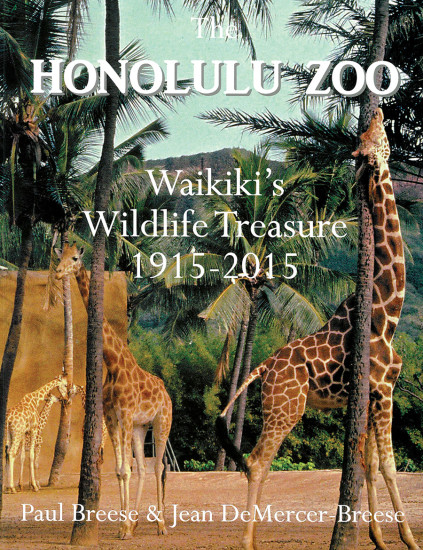 Paul had several mentors from his beginnings at the zoo. His supervisor, Curator of Reptiles C.B. “Si” Perkins told him, “When you work here, first do your jobs exactly the way that we showed you. Then, find out why we do things that way. After that, you can make suggestions about how you think the work could be improved.” This advice, Paul says, was most useful in his career. He also names Mrs. Belle Benchley, then San Diego’s zoo director, as an important mentor, who took an interest in the enthusiasm he had for the reptiles. Promoted to driver-guide on one of the zoo’s two sightseeing buses, he received $5 a day for his work. Paul says Mrs. Benchley played an important role in his life, and within the book, expounds on how she supported him throughout his career.
Paul had several mentors from his beginnings at the zoo. His supervisor, Curator of Reptiles C.B. “Si” Perkins told him, “When you work here, first do your jobs exactly the way that we showed you. Then, find out why we do things that way. After that, you can make suggestions about how you think the work could be improved.” This advice, Paul says, was most useful in his career. He also names Mrs. Belle Benchley, then San Diego’s zoo director, as an important mentor, who took an interest in the enthusiasm he had for the reptiles. Promoted to driver-guide on one of the zoo’s two sightseeing buses, he received $5 a day for his work. Paul says Mrs. Benchley played an important role in his life, and within the book, expounds on how she supported him throughout his career.
After World War II broke out in 1941, Paul joined the Navy. He first came to Hawai‘i while on Navy duty, assigned to the Waianae Amphibious Training Base. On his rare day off, he would visit the Waikiki Bird Park (which later became the Honolulu Zoo under Paul’s direction.) He worked on the islands of Yap and Palau for a federal agency, (the US Commercial Company), and met his first wife Mary Lew FitzSimmons who also worked at the agency. They married in 1946 and eventually had three daughters and a son. With the help of the Veteran’s GI Bill, he graduated from University of Hawai‘i at Manoa with a major in zoology.
In their family life together, Mary Lew was very supportive of Paul’s career, and in addition to rearing their children, spent many unpaid hours caring for infant gorillas and African lion cubs in their Kailua, O‘ahu home. Her compilation of the newspaper articles written during Paul’s tenure at the zoo was a great source of information for the book. Paul and Jean agree that writing the book was a family endeavor, with adult daughters Marlee Breese, Natalie Breese Sainsevain and Dawn Breese contributing their talents to the project.
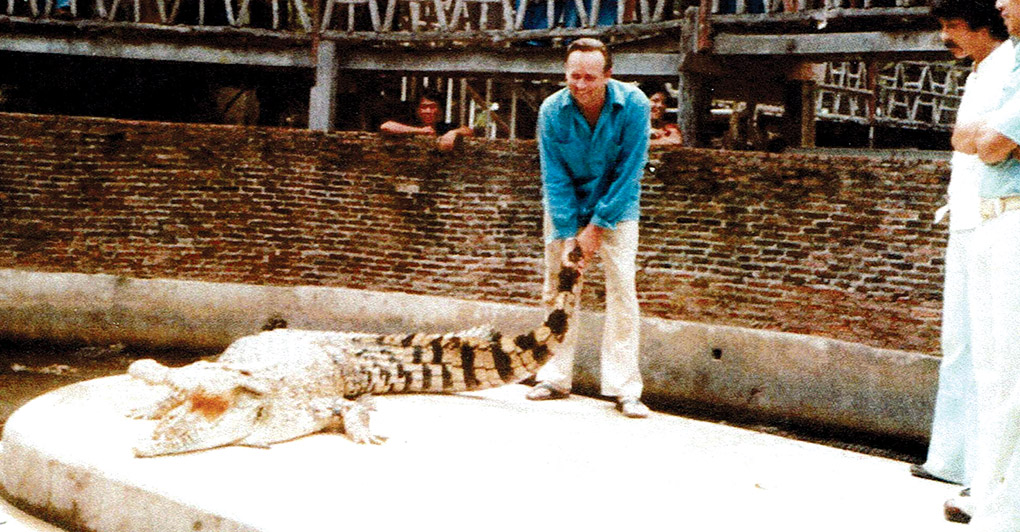
Waimea resident, Bob Reynolds, is a retired firefighter from O‘ahu. He recalls a memorable Halloween as a child in the 1950’s, trick-or-treating in his Kailua neighborhood. “We got to the Breese’s house and Marlee, Paul’s oldest girl opened the door with a baby gorilla on her hip,” Bob recalls with a smile. “I’ll never forget how surprised we were when she passed out the candy while holding him.”

Paul says his years of zoo keeping, including studying and interpreting animals on his own, as well as his time at the San Diego Zoo, provided his basic animal care knowledge. His many experiences in leadership under enemy fire during the war “strengthened my determination and gave me, at the age of only 24, the confidence to take on the challenge of rebuilding the zoo for Honolulu.” His wartime experiences helped him overcome challenges both small and large. His motto became, “If I can overcome getting shot at, I can accomplish this minor challenge.”
In August of 1947, Paul was appointed as the first zoo director in Honolulu and began plans to upgrade both the zoo and bird park. With the help of his mentor Mrs. Benchley, and countless other friends and allies he had made, (named in their book), Paul was able to turn the small Honolulu zoo into one of the country’s finest. He helped create the master plan as well as worked on the acquisition of zoo animals. He was instrumental in building up successful breeding programs to help propagate various birds and other animals. These included the koloa (Hawaiian duck), Japanese sacred cranes, cassowary, giraffes, and Galapagos tortoises.
The challenge, Paul says, is to enrich zoo visitors with physical contact and participation. “It’s about glass and grass versus bars and steel,” Paul says, adding, “Of course, with tigers, it can be difficult…but by building big, spacious places, it became important to create natural habitats within an urban zoo setting.”
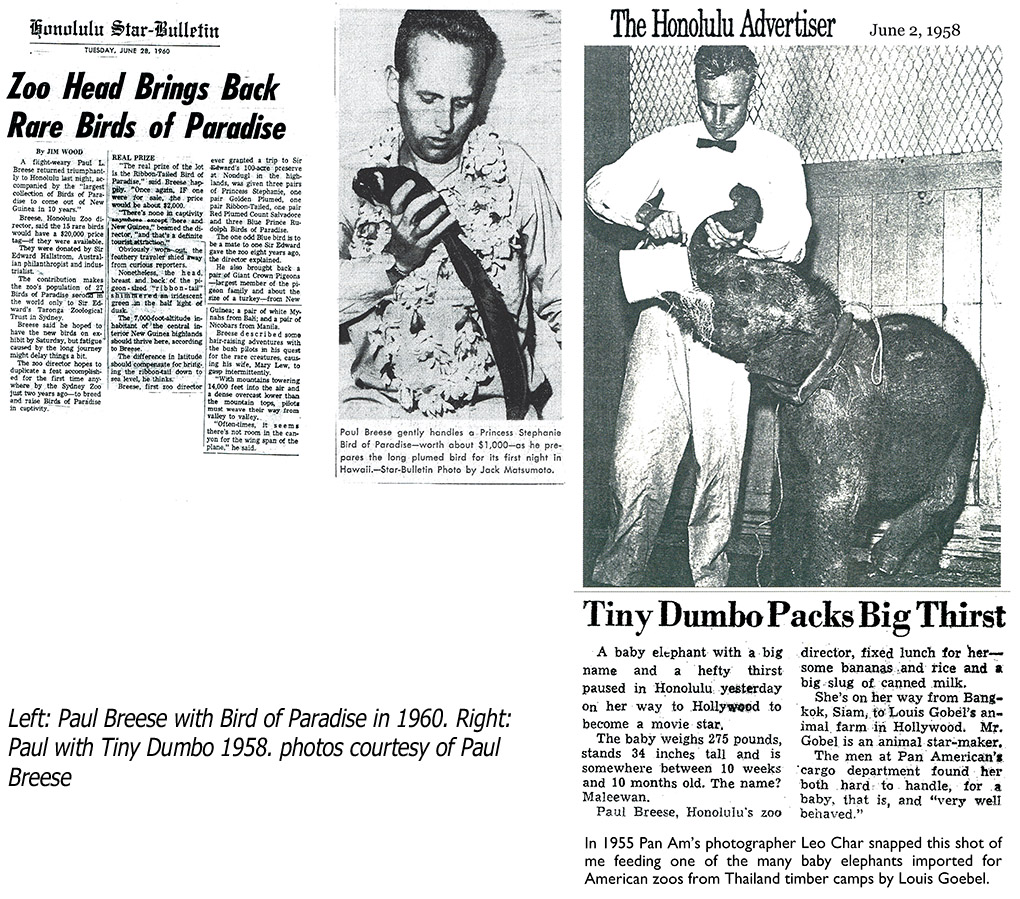 Over the course of his career, Paul has served as the former Chief of Wildlife of Research, continued on as an advisor to the zoo, was a chairperson of the Nēnē (Hawaiian goose) Advisory Committee (playing a key role in saving the Nēnē from extinction), established the Brown Tree Snake Control Group and was former Vice-Chairperson of the Conservation Council of Hawai‘i (which helped make Nēnē the official state bird.) He was inducted as a 2016 Living Treasure by the Honpa Hongwanji Mission of Hawai‘i for his conservation work, which continues to enrich the lives of successive generations.
Over the course of his career, Paul has served as the former Chief of Wildlife of Research, continued on as an advisor to the zoo, was a chairperson of the Nēnē (Hawaiian goose) Advisory Committee (playing a key role in saving the Nēnē from extinction), established the Brown Tree Snake Control Group and was former Vice-Chairperson of the Conservation Council of Hawai‘i (which helped make Nēnē the official state bird.) He was inducted as a 2016 Living Treasure by the Honpa Hongwanji Mission of Hawai‘i for his conservation work, which continues to enrich the lives of successive generations.
Jean says in the late 1960’s she arrived on Hawai‘i Island and was training for the Peace Corps, with the Philippine Islands as her destination. She decided to remain in Hawai‘i when she was told that a North Kohala elementary school needed a teacher. The DOE administrator personally drove her to visit the school, and that ride changed her life. Jean began teaching at Kohala Elementary. She met her first husband Robert DeMercer, married in 1971 and they had four daughters. Sadly, she lost her husband in 1980 to a car accident, and continued to raise her children alone.
Jean met Paul in 1984, after he had moved to North Kohala some years after his retirement. “I was cheated out of my first love,” says Jean. “I thought, ‘Why not take a chance?’, and we married in 1986.”
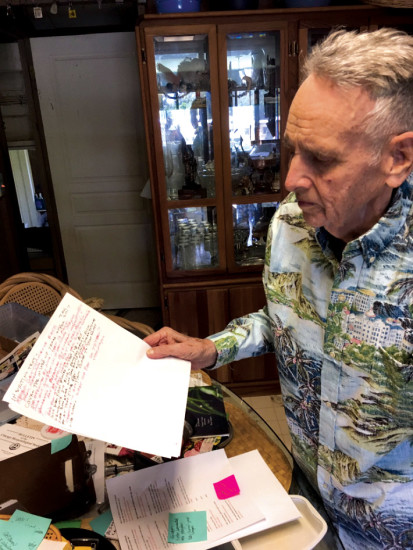
She retired in December of 2012 and this allowed her more time to assist in writing the book they had started. She says the skills from raising her own children to teaching school kids allowed her to transfer that knowledge into co-writing their book. Paul adds that Jean’s talent of keen observation absolutely contributed to the success and coherency of their project together. “I love to learn with Paul,” Jean says, “And we are very companionable.” The couple celebrated their 31st anniversary in August of 2017.
Earlier this year, Paul underwent heart valve surgery. In order to assist in his recovery, the doctor recommended that he choose a project to work on. “I could have chosen lauhala weaving, which I love, or danced with old ladies (but I’m a bad dancer, not that I don’t like the old ladies),” Paul adds with a laugh. “But I thought about what I could do to make the biggest contribution.”
At the age of 95, Paul is excited about their current project together: co-authoring another book. He and Jean are compiling stories, photos and timelines about Hilo’s Panaewa Zoo which opened in 1977. Paul’s main motivation for co-writing their second book is to recognize the creators and key players of the Panaewa Zoo.
Paul says, “At this stage in my life, it’s a fact that I’m so totally lucky to be here, and to be thinking. This is the only moment in time that you’ll ever have, and it’s elusive…gone in a second. Live your life to the fullest and treasure what you’ve got.” ❖
